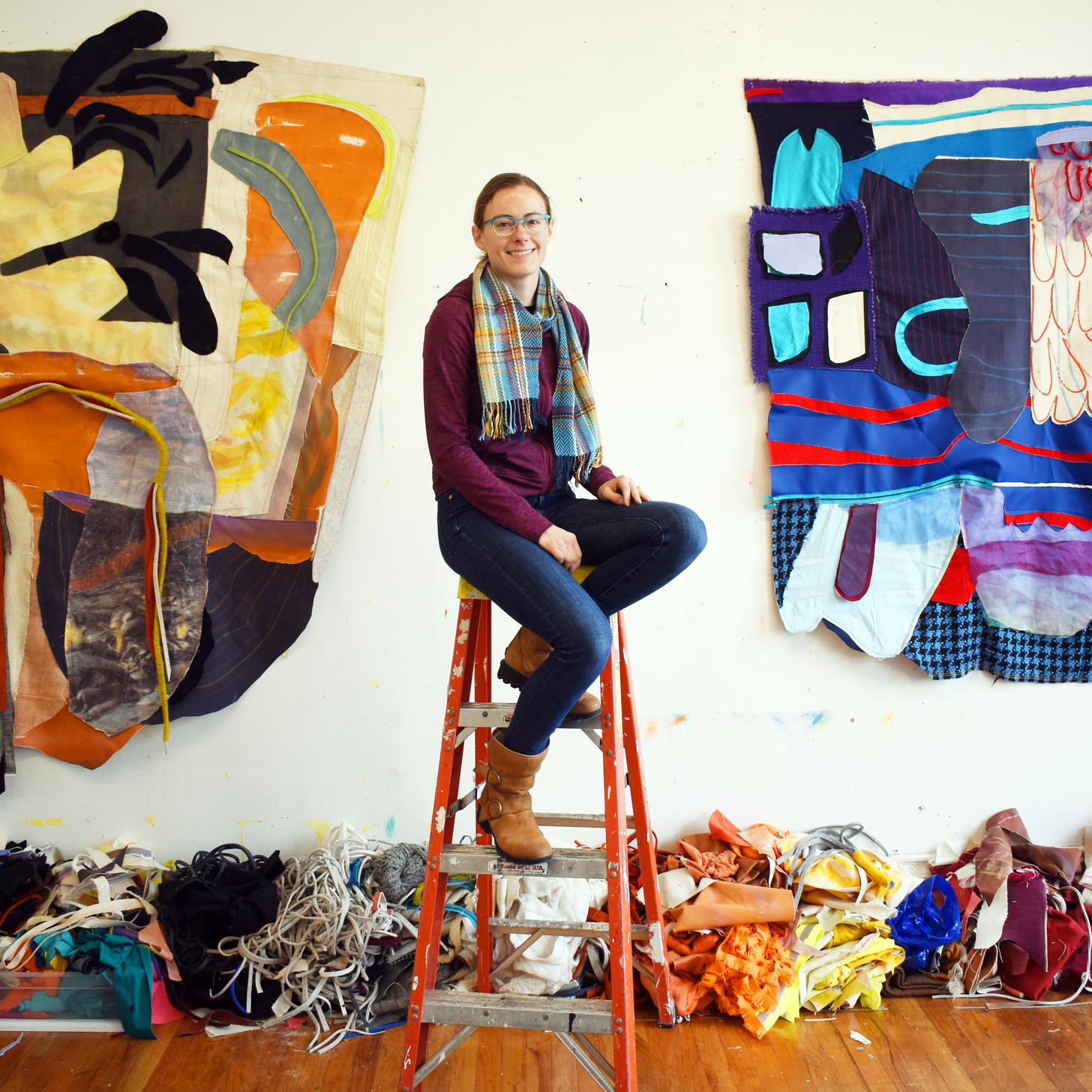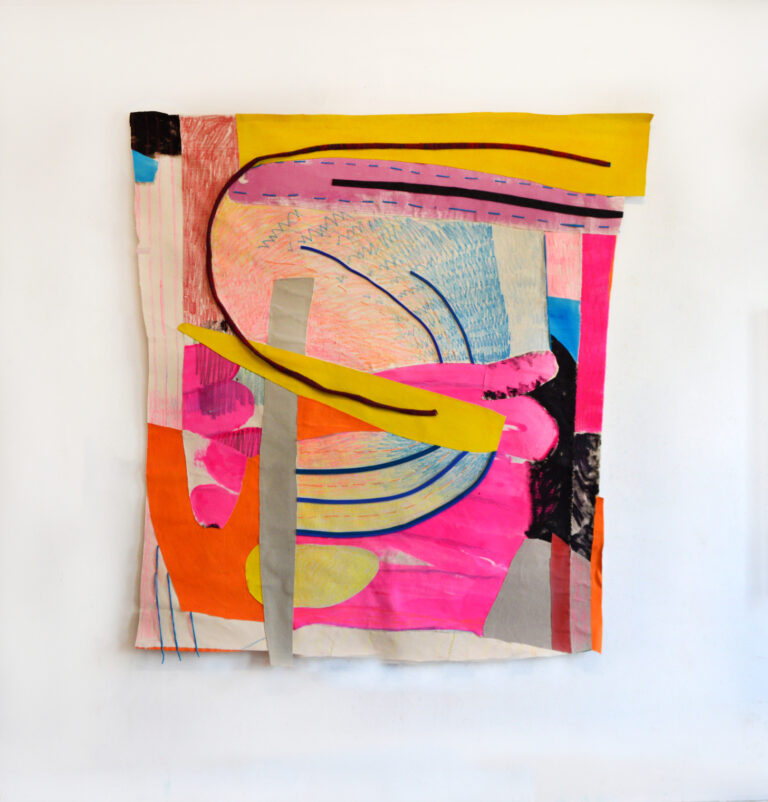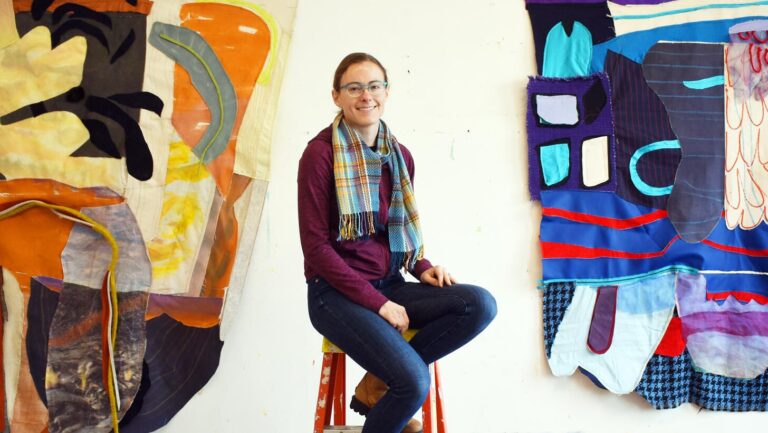Molly Zimmer’s new work opening at the Harwood Art Center’s Main Gallery on Friday, Jan. 10 is large like the landscapes they represent. Full of texture, they are assembled in layers that correspond with the elements she sees in nature. As impressionistic as Claude Monet, these landscapes are composites transfigured in her mind and rendered in cloth. They are soft, comfortable landscapes that invite contemplation while maintaining vibrance. Weekly Alibi sat down with Zimmer to talk about landscapes, time and texture. The following is an edited version of that conversation.Weekly Alibi: Your Soft-Scapes are essentially landscapes. Where is this? Where are we?Molly Zimmer: My interest in landscapes comes from my family’s background doing farming and ranching in the Texas Panhandle. And I enjoy going outdoors, hiking, as well as painting and outside drawing. These in particular have references to, most of them, have some sense of a horizon or an idea of space going back, a foreground, middle ground and background. Like moving through space as if you’re walking in a garden or landscape. I’m also pulling particularly on shapes of gardens, like flowers, trees, shrubs, vegetation, ponds, reflections and things of that nature.Space and time are equivalent. Are we moving through time or is this just a snapshot? A moment or experience. Time in the sense of maybe different seasons.So, you see these as a specific period of time in a specific location and from that you are drawing analogies to specific elements. Do you use a specific palette? Some of it is a palette in color. Earth tones, greens of vegetation, even sky colors. Different times of day, too. Some of them are even start with the collages and the collages are based in memories of walking in the Albuquerque Botanic Gardens and other people’s gardens around town. And then in the landscape itself in the Southwest.You have a key in your mind?Yeah. And then I’ve got different kinds of drawings of gardens, too.Are those elements deployed throughout the entire show? Would the viewer be able to find commonality or are they only apparent to you?I think they would say they start with me. Some things do become abstracted. How far away from the work should people view it?I would say probably about 15 feet or so. They are large, but I consider them also as a textural environment to be immersive and engaging to walk up to. You went to school back East (Maryland Institute of Art) for a little bit and had an artistic career there. How did you find your work was received there versus here?I was still interested in the landscape itself, but a lot of the work that I was making was still connected to the Southwest, kind of a warm palette of colors. I did a series on mining.Mining? What sort of mining?(I was) thinking about open pit mines and a more political stance, then considering these bulbous or feminine shapes in contrast to industrialization.What’s the difference in working with fabric versus painting versus collage? Do you approach them differently?I think that collage allows for a more intuitive approach and a lot of my work is still beginning in intuitiveness. What do you want the audience to get from this work?I want people to first engage with the works on a tactile level and enjoy them. For me, there’s a lot of enjoyment in making and also in looking at the pieces themselves. Then to walk away. I hope that they understand a little more about like how gardens and textiles are for me connected. They’re both a sense of protection and exploration and play. They’re a little bit whimsical, ever changing and fluid. I consider cloth our first wrapping, our first form of protection. I think that softness and sensibility is important to walk away with.
Soft-Scapes: Assemblages by Molly Zimmer
Opening reception Friday, Jan. 10, 6-8pmHarwood Art Center1114 Seventh Street NW













